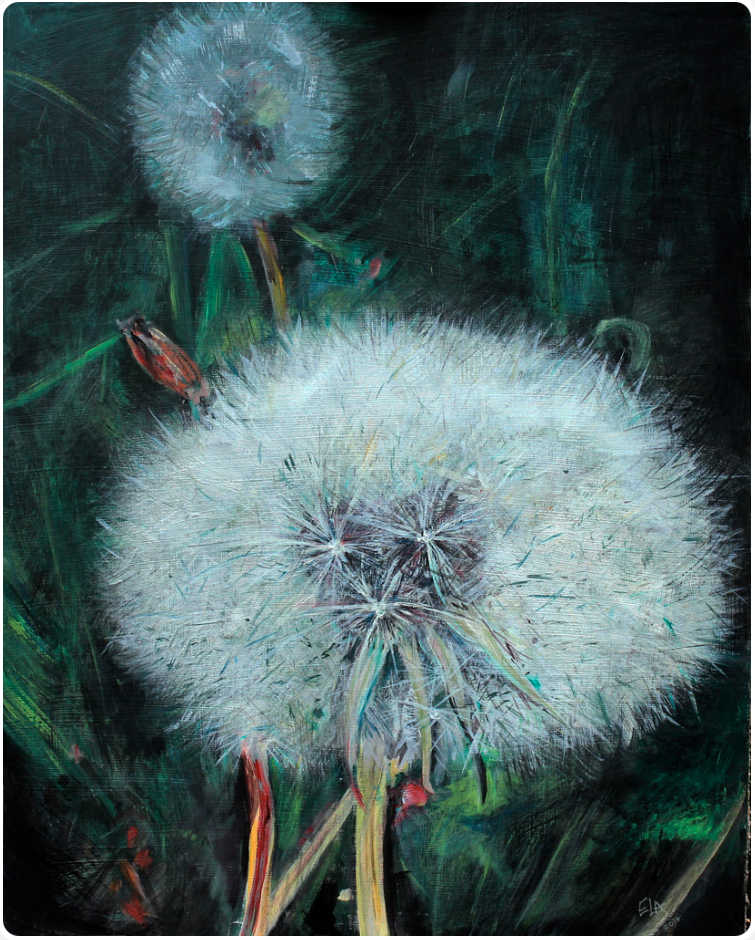Moon Gazing: Gardening with the Moon in March
Hurrah, Spring is finally here!
March is the month when we can really start to manifest our garden dreams. The days are getting noticeably longer, and the air and soil temperatures are starting to warm up.
The Spring Equinox is on 20 March 2024. The day when day and night are of equal duration and you should gather your friends to celebrate.
Moon gazing
The March Full Moon is named the Seed Moon, though sometimes also the Wind Moon and Plough Moon and you will remember this when you wrap up warm in the sunshine. You should also be able to see some of the lunar eclipse before dawn on the morning of 25 March.
We see the Full Moon when our Earth is exactly between the Moon and Sun and the penumbral eclipse of the Moon happens when the Moon’s orbit brings it close enough to the Earth that she passes through the outer part of the Earth’s shadow - the penumbra.
The penumbral eclipse is subtle. It starts at 04:53 and will be visible on the western horizon for about an hour, until moonset which will be just before sunrise.
Planting with the Moon
The Earth ‘breathes out’ in the morning... which is why it’s usually the best time for harvesting as the upper parts of the plant are more active. If you want to see this for yourself, harvest something like lettuce (or cut flowers) at different times of the day and see which stays freshest the longest.
The Earth effectively ‘breathes in’ during the afternoon/evening and then the lower parts of the plant are at their most vital and active. If you can do your planting in the afternoon (during descending Moon) then your plants will settle into the soil that much quicker, causing less stress all round.
In March the descending Moon is from 17th – 31st. This is the best time to do any work that involves the soil, such as planting, digging in green manures or adding compost.
Moon Phases for the UK in March 2024
| Third Quarter | |
| 3 Mar | 15:23 |
| New Moon | |
| 10 Mar | 09:00 |
| First Quarter | |
| 17 Mar | 04:10 |
| Full Moon | |
| 25 Mar | 07:00 |
Planting with the Moon
There are quite a few ‘blank’ days in the March Moon calendar. These are days when there are no helpful influences coming from the Moon (or other planets) so it’s best to avoid any sensitive work with seeds or plants on the 10th, 12th, 13th, 29th and 30th.
Roots and Bulbs
For planting summer flowering bulbs or perennials choose the 17th, 18th or 28th, and plant strawberries out on 21st, 22nd or 23rd.
Leafy herbs like mint, thyme or rosemary are best planted out on the 20th or the 31st.
Why not put some in pots in a place where you can access them easily when you’re cooking such as close to your kitchen door?
The best root days for planting shallots, onion sets, and early potatoes are the 24th – 27th.
Sowing Seeds
Introducing wildflowers into your garden is an excellent way to attract wildlife (especially lots of helpful pollinators) into your garden. The best days this month to sow hardy annual wildflowers like chamomile, cornflowers and poppies are 17th, 18th, and 19th. These are also good days to sow sweet peas in pots under cover.
If you’re planning to grow some vegetables from seed ‘in tune with the Moon’, here are some optimal sowing dates during the week before the full Moon, when you will get a quicker, stronger germination.
Sow leafy crops like spinach, parsley, lettuce, and cabbage on the 20th.
Sow fruit crops like early peas, tomatoes, peppers, and aubergine on the 21st, 22nd and 23rd.
Sow root crops like carrots and radish on the 24th or 25th.
You might want to consider sowing some green manures this month. These are plants that help to build healthy fertile soils on any empty patches in your vegetable garden. The most useful are the quick growing ones like phacelia and mustard which become food for the soil organisms when they’re dug in as organic matter. Direct sow annual green manures on either the ‘leaf’ days on the 20th or ‘root’ days 24th and 25th before the full Moon.
The living organisms in the soil need time to digest this green meal, so it’s important to dig the green manures in at least three weeks before you intend to sow anything else, as germination can sometimes be inhibited by half-digested organic matter.
If you have questions for me that relate to my blog - Moon and growing related - please send them to me using the Earth Pathways contact page. I would also like to direct curious readers to the UK Biodynamic Association website.
Thank you for joining me on this growing journey.
Claire Hattersley









